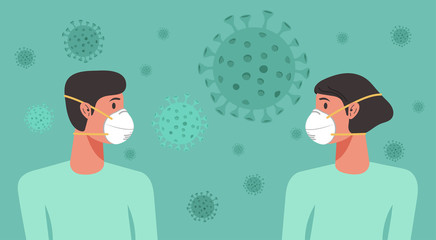For many infectious diseases, women are at higher risk and experience a more severe course of illness than men. In some southern African countries, for example, young women are up to eight times more likely to have HIV than men of the same age, which is thought to be due, in part, to gender inequity, gender-based violence, age-disparate relationships, and not simply because of biological differences.
But in the case of COVID-19, that’s not the case — in this case, it’s men that seem to bear the brunt of the damage.

Men are more likely than women to die of the coronavirus. This is particularly pronounced in Italy, where men represent nearly 70% of the country’s deceased patients. Scientists suspect unhealthy habits like smoking and underlying health issues among men could be influencing this trend.
According to a study in Frontiers in Public Health, men are 2.4 times as likely to die from COVID-19 than women, regardless of age. Moreover, older men with underlying medical conditions are much more likely than their female counterparts to have poor outcomes from COVID-19 infection, according to a small retrospective study published in PLOS Pathogens.
Investigators in the Frontiers study extracted data from a case series of 43 COVID-19 patients hospitalized in Wuhan, China; a public data set from the first 37 patients who died of the virus and 1,019 survivors in China; and information from 524 SARS (severe acute respiratory syndrome) patients, including 139 who died, in 29 Beijing hospitals in early 2003 to compare the two diseases.
In the case series, 37.2% of patients had one or more underlying conditions, such as high blood pressure, diabetes, cardiovascular diseases, and chronic lung disorders. Male COVID-19 patients had elevated levels of serum creatinine (indicating kidney damage), white blood cells (indicating immune response), and neutrophils (indicating inflammation). Of the 43 patients in the case series, 13 (30.2%) had mild or moderate pneumonia, while 14 (32.6%) had severe pneumonia, 16 (37.2%) had critical pneumonia. Chi-square (χ2) test for trend showed that men tended to have more serious illnesses than women (P = 0.035).
Advanced age and a high number of underlying diseases were linked to more severe disease and death in patients who had either COVID-19 or SARS. In the case series, men tended to have more serious disease than women (P = 0.035), while the public data set revealed that men were 2.4 times more likely than women to die of COVID-19 (70.3% versus 29.7%; P = 0.016).
Of the 37 non-survivors in the public data set, 70.3% were men, 29.7% were women, and 64.9% had one or more underlying conditions. These patients were significantly older, at 65 to 81 years, with 83.8% of them age 65 and older, versus survivors, who were 35 to 57 years old, with 13.2% 65 and older.
In patients with SARS, the proportion of males in the group who died was higher than that of the surviving group (P = 0.015). In this group, 57.0% of patients had one or more underlying conditions. Median age of non-survivors was much higher than that of survivors (57 versus 32; P < 0.001), and non-survivors were also more likely than survivors to have underlying disease (57.0% versus 17.9%; P < 0.001). The percentage of men was higher in the non-surviving group (53.2%) than in the surviving group (42.3%) (χ2 test; P = 0.027). Men were also significantly more likely to die than women (31.2% vs 22.6%; hazard ratio, 1.47; 95% confidence interval [CI], 1.05 to 2.06; P = 0.026).
In the PLOS Pathogens case series, researchers studied the data of 168 patients with the novel coronavirus admitted consecutively to Tongji Hospital in Wuhan, China, from Jan 16 to Feb 4. Overall, 17 patients (8.9%) died, while 136 (81%) were released from the hospital. Eleven (12.8%) of the 86 male patients died, while 65 (75.6%) were released from the hospital. Six (7.3%) of the 82 female patients died, while 71 (86.6%) were released. Fifty-seven patients had underlying conditions (33.7%). Median time from illness onset to hospital admission was 9 days for males and 7 days for females.
Of male patients, 36.0% had a chronic underlying illness, especially diabetes and cardiovascular and cerebrovascular diseases. After adjusted logistic regression analysis, males with underlying illnesses were more vulnerable to critical illness than those without comorbidities.
This was not the case for females. After adjustment for confounding factors, males 80 years and older were more likely to become critically ill than those younger than 59. But this wasn’t true for females.
Men and women differ in both innate and adaptive immune responses. These disparities may be attributed to steroids and X-linked gene activity, which both regulate the immune response to viruses. The authors said that future studies are needed to identify the different pathways and cellular responses between the two sexes.


